Last updated on July 16th, 2023
Rev up your engines and charge ahead because we’re about to take a joyride through the electrifying world of electric vehicles! Buckle up and prepare to be amazed as we uncover the shocking facts that make these eco-friendly rides the coolest things on four wheels. Electric cars are the epitome of futuristic transportation, from their mind-blowing acceleration to their silent purr. But that’s just the beginning! We’ll delve into some pretty interesting facts about electric vehicles!
1. Electric vehicles (EVs) are automobiles that utilize one or more electric motors as their primary source of propulsion, distinguishing them from traditional internal combustion engine (ICE) vehicles fueled by gasoline or diesel.[1]
2. The batteries used in electric vehicles can be repurposed for energy storage after their automotive lifespan. This secondary use extends the overall sustainability and value of EV batteries.[2]
3. Scottish inventor Robert Anderson created the first practical electric vehicle, a precursor to modern EVs, during the 1830s. Anderson’s electric carriage was powered by non-rechargeable batteries, which limited its practicality.[3]
4. The global electric vehicle (EV) market has experienced a remarkable surge, exhibiting rapid growth and widespread adoption. In 2020 alone, global sales of electric vehicles surpassed an impressive milestone of over 3 million units.[4]
5. Electric vehicles (EVs) are crucial in reducing air pollution and combating climate change as they produce zero tailpipe emissions. EVs’ environmental benefits depend on the electricity source used to charge them.[5]
6. Electric vehicles often have a lower center of gravity due to the placement of heavy batteries, improving stability and handling on the road.[6]
7. EVs are generally more energy-efficient than conventional vehicles, converting over 77% of the electrical energy from the grid to power at the wheels, compared to only 12-30% efficiency for internal combustion engines.[7]
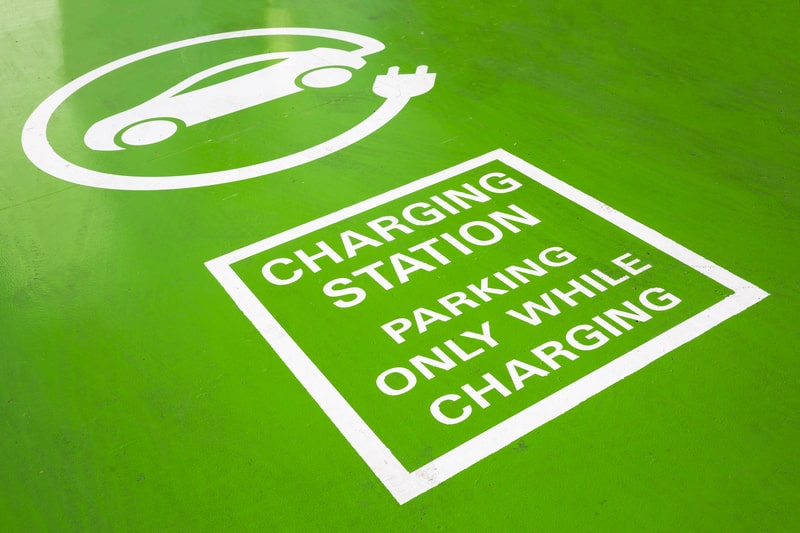
8. The driving range of an EV refers to the distance it can travel on a fully charged battery. Range varies across models but has been increasing with advancements in battery technology. Some EVs now have ranges over 300 miles (483 kilometers) on a single charge.[8]
9. EVs can be charged using a standard electrical outlet or with dedicated home charging stations. They can also be charged at public charging stations or fast-charging stations, which provide a quicker charge.[9]
10. The time required to charge an EV fully depends on the charging method and the battery’s capacity. Level 1 charging (using a standard outlet) may take several hours, while Level 3 fast charging can provide an 80% charge in around 30 minutes.[10]
11. The cost of owning and operating an EV can vary depending on factors. Electric vehicles have lower operating costs compared to conventional vehicles. They generally require less maintenance since they have fewer moving parts and don’t require oil changes.[11]
12. Battery electric vehicles (BEVs) rely solely on electric power, while plug-in hybrid electric vehicles (PHEVs) combine an electric motor with an internal combustion engine, offering greater driving range.[12]
13. Many governments worldwide are implementing policies to encourage the adoption of EVs, such as offering financial incentives, installing charging infrastructure, and setting goals for phasing out internal combustion engine vehicles.[13]
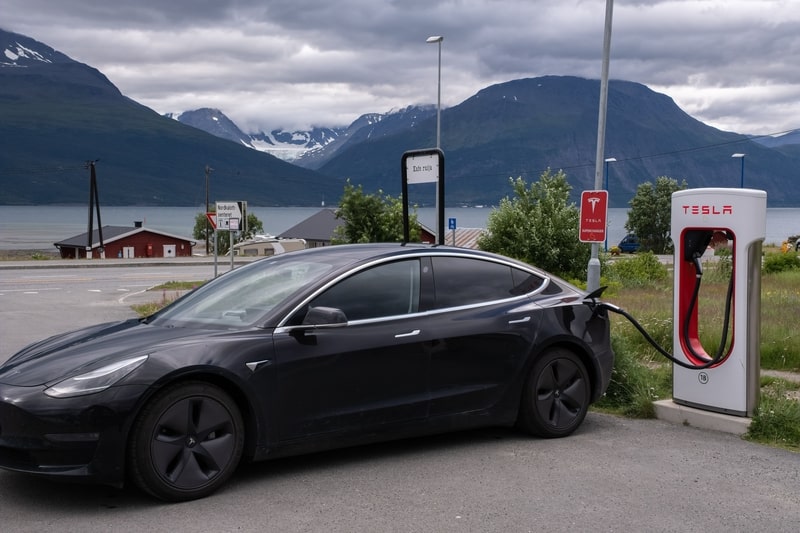
14. Tesla, founded by Elon Musk, is one of the most well-known electric vehicle manufacturers, producing popular models like the Tesla Model S, Model 3, Model X, and Model Y.[14]
15. Electric vehicles are not limited to cars. Electric buses, trucks, motorcycles, and even electric planes and boats are being developed and deployed, showing the versatility of electric power in various transportation sectors.[15]
16. Some electric vehicles offer features like “vehicle-to-grid” (V2G) technology, enabling bidirectional energy flow between the vehicle and the grid. This capability allows EVs to consume electricity and supply power back to the grid when needed, enhancing grid stability and resilience.[16]
17. Regenerative braking is a feature in many EVs that converts the vehicle’s kinetic energy during braking or deceleration into electrical energy, which is then stored in the battery.[17]
18. Electric motors provide instant torque, resulting in quick acceleration and a smooth driving experience.[18]
19. Some EVs offer features like “one-pedal driving” or “e-pedal,” which allow the driver to accelerate and decelerate using only the accelerator pedal, thanks to regenerative braking.[19]
20. There were approximately 1,777,000 available charging stations worldwide in 2021, with about 1.2 million slow chargers and 577,000 fast chargers.[20]
21. Electric vehicles have fewer parts than internal combustion engines (ICE). While ICE vehicles typically have over 2,000 moving parts, electric vehicles have around 20 moving parts, resulting in simplified maintenance and potentially lower repair costs.[21]
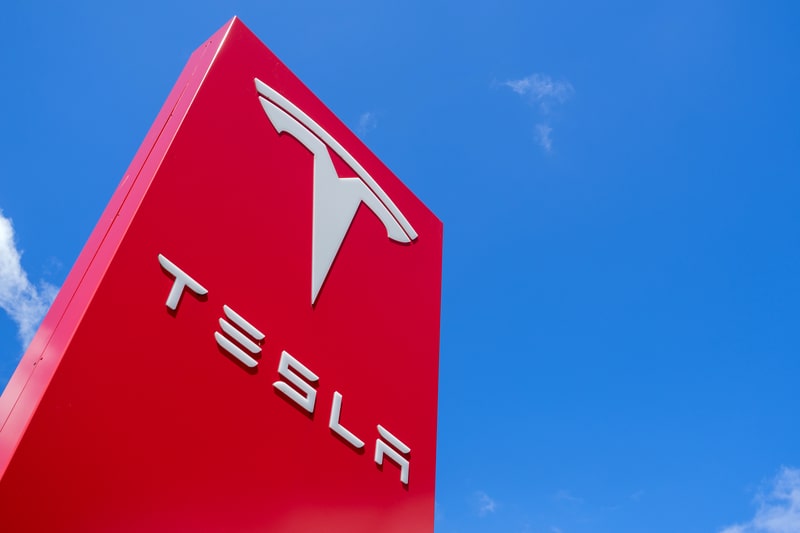
22. Tesla, led by Elon Musk, has played a significant role in popularizing electric vehicles, offering high-performance electric cars and driving advancements in battery technology.[27]
23. The automotive industry invests heavily in research and development to improve battery technology, aiming to increase energy density, reduce costs, and enhance overall performance.[22]
24. Electric vehicles are considered safer in certain aspects. Due to the absence of flammable fuels in EVs decreases the risk of fires or explosions in the event of a collision.[23]
25. Electric vehicles have the potential to enhance energy grid stability. By utilizing smart charging systems, EVs can charge during periods of low demand or high renewable energy generation. This allows for better grid management, optimization of energy resources, and integration of renewable energy sources into the electricity grid.[24]
26. Electric vehicles contribute to reducing noise pollution in urban areas. Since they don’t have loud internal combustion engines, they operate quietly, creating a more peaceful driving environment.[25]
27. China is the largest market for electric vehicles in terms of production and sales, followed by Europe and the United States.[26]
28. The mining and extracting of materials for electric vehicle batteries, such as lithium, cobalt, and nickel, raise concerns about environmental impact and sustainability. Efforts are being made to improve these materials’ ethical sourcing and recycling.[28]

29. Electric bikes and scooters are popular forms of electric transportation in urban areas. Electric bicycles, also known as e-bikes, have become increasingly popular worldwide. In fact, e-bike sales now exceed sales of regular bicycles in the Netherlands.[29]
30. Electric buses are gaining traction as an eco-friendly and quiet mode of public transportation, reducing noise pollution and emissions in cities.[30]
31. As electric vehicle technology continues to evolve, research is being conducted on innovations such as solid-state batteries, wireless charging, and vehicle-to-grid integration, which will further enhance the performance and capabilities of electric vehicles.[31]
32. The world’s first fully electric camper van, called the Volkswagen e-BULLI, was unveiled in 2020. It is a modern electric conversion of the classic VW Microbus, combining retro aesthetics with eco-friendly technology.[32]
33. Electric vehicle charging stations are not just limited to land. Norway, for instance, has implemented underwater electric vehicle charging stations, allowing electric boats to recharge their batteries without needing to dock.[33]

34. One of the longest ranges achieved by an electric vehicle on a single charge was set by a Tesla Model S in 2020, traveling 670 miles (1,078 kilometers) in Italy.[34]
35. Some electric vehicle manufacturers, such as BMW and Tesla, use regenerative braking systems that automatically activate when the driver lifts their foot off the accelerator, helping to recharge the battery and extend the vehicle’s range.[35]
36. Electric vehicles are not just limited to cars and bicycles. Electric skateboards, scooters, and even electric unicycles have gained popularity as personal transportation options.[36]
37. In 2019, the Lightyear One, a solar-powered electric car, was introduced. It features integrated solar panels on its roof and hood. The Lightyear One can charge its battery directly from sunlight and has a claimed range of up to 450 miles (724 kilometers).[37]
38. The FIA Formula E Championship is an all-electric racing series that features high-performance electric cars competing on street circuits worldwide, showcasing the potential of electric vehicle technology in motorsports.[38]
39. Electric vehicle adoption rates vary widely across countries. Norway leads the world in electric vehicle market share, with over 50% of new car sales being electric, followed by Iceland and Sweden.[39]
40. Electric vehicles have been used for record-breaking feats. In 2020, the electric plane Extra 330LE set a new world record for the fastest climb to 3,000 meters, reaching the altitude in just 4 minutes and 22 seconds.[40]
41. Electric vehicle technology dates back further than most people think. In the late 19th century, electric taxis were widely used in major cities like New York, London, and Paris before being overtaken by gasoline-powered taxis.[41]
42. Electric vehicles can act as portable power sources. Some models, like the Ford F-150 Lightning, can power a home or provide electricity during power outages using built-in power outlets.[42]
43. The Bolloré Bluecar, an electric car developed by the Bolloré Group, features a unique interior made from ecological materials, including natural cork and recycled plastics.[43]

44. Electric vehicle charging times can vary depending on the charging infrastructure. In 2019, StoreDot, an Israeli start-up, demonstrated its fast-charging battery technology, capable of fully charging an electric vehicle in just five minutes.[44]
45. The world’s first fully solar-powered electric vehicle, the “Stella Vie,” was developed by a team of students from the Eindhoven University of Technology in the Netherlands. It generates more energy than it uses, allowing surplus energy to be fed back into the grid.[45]
46. The Netherlands has introduced innovative solar roadways featuring embedded solar panels in the road surface. Electric vehicles can charge directly from the road while driving on these solar-powered lanes.[46]
47. Electric vehicles have been used in extreme conditions. In 2010, an electric snowmobile, the Buckeye Bullet 2.5, set the land speed record for an electric vehicle on ice, reaching a speed of 307.7 miles per hour.[47]
48. Electric vehicles have sparked a revival of interest in vintage models. Companies like Electric Classic Cars specialize in converting classic cars into electric vehicles, combining retro aesthetics with modern electric drivetrains.[49]
49. The world’s fastest electric car, the Rimac C_Two, can go from 0 to 60 mph (0 to 97 km/h) in just 1.85 seconds, making it one of the quickest production cars in the world.[50]
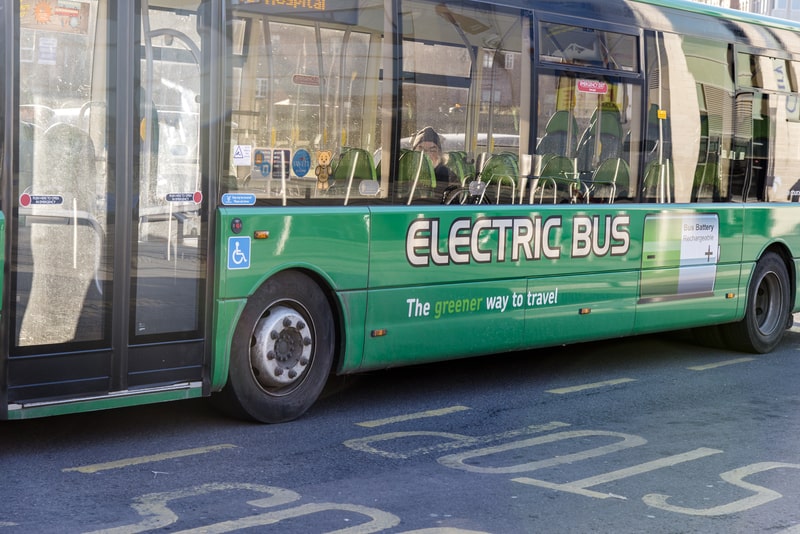
50. Electric buses have made significant strides in public transportation. The Proterra Catalyst E2 Max, an electric bus, holds the world record for the longest distance traveled on a single charge, covering 1,101.2 miles (1,772.2 kilometers).[48]
51. The world’s largest electric vehicle, known as the eDumper, is an electric mining dump truck. It weighs over 45 tons and can carry a payload of up to 65 tons, demonstrating the potential for electric power in heavy-duty applications.[51]
52. The world’s first electric amphibious vehicle, the Quadrofoil Q2S, is an electric hydrofoil boat that can reach speeds of up to 25 knots (40 km/h) while gliding above the water’s surface.[52]
53. Electric bicycles, such as the Xkuty One, can be folded down to a compact size, making them ideal for urban commuting and storage in small spaces.[53]
54. The Tesla Model S offers a hidden “Easter egg” feature called “Ludicrous Mode,” which enables the car to accelerate from 0 to 60 mph (0 to 97 km/h) in just 2.4 seconds, providing an exhilarating experience for drivers.[54]
55. The Guinness World Record for the longest distance traveled on a single charge by an electric motorcycle is held by the Zero Motorcycles SR/F, which covered 1,723.2 miles (2,774.3 kilometers) in 24 hours.[55]
56. The “Charging Bull” sculpture on Wall Street in New York City now has a companion—a bronze statue of a girl called “Fearless Girl” promoting clean energy. The statue features a plaque that says “100% electric vehicles” to raise awareness of sustainable transportation.[56]
57. Electric vehicles can be used as energy storage devices in a process known as vehicle-to-grid (V2G) technology. They can discharge stored energy back to the grid during peak demand periods, helping stabilize the electrical grid.[57]
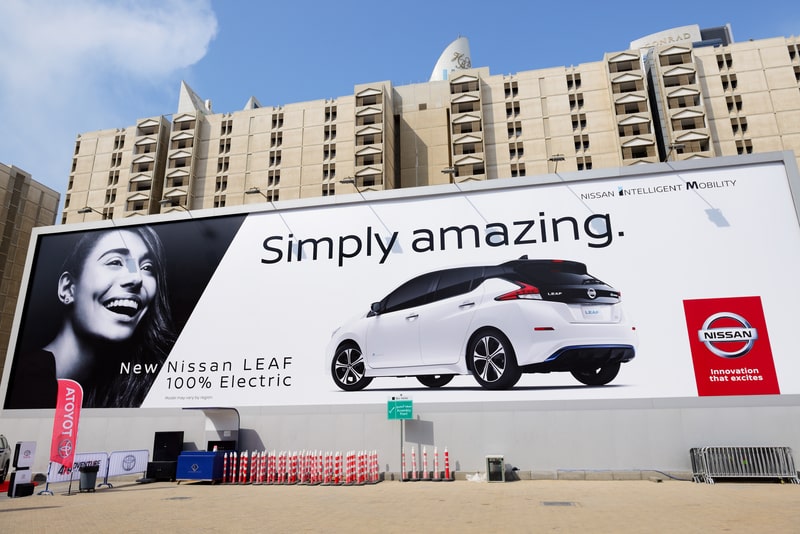
58. The Nissan Leaf, one of the best-selling electric cars worldwide, selling over 450,000 vehicles since 2010.[58]
59. The Tesla Roadster, an upcoming all-electric sports car, will be equipped with SpaceX rocket technology. It will have a “SpaceX Package” option that includes cold air thrusters to enhance its performance and enable limited flight capabilities.[59]
60. Some electric buses, like the Tindo, are equipped with rooftop solar panels that provide a portion of their energy needs, reducing reliance on the electrical grid.[60]
61. In 2019, a solar-powered electric tricycle, the Solar Racer, completed a journey of 12,500 miles (20,117 kilometers) across 16 countries, showcasing the potential of solar energy in sustainable transportation.[61]
62. The world’s first electric-powered flying car, the Lilium Jet, is under development. It is expected to have vertical take-off and landing capabilities, providing a new dimension to urban transportation.[62]
63. Electric vehicles are not just limited to land and air—they can also be used in water. The X Shore Eelex 8000 is an electric boat that offers a quiet and emission-free boating experience.[63]
64. The first electric vehicle charging station in the world was established in 1901 at the Hartford Electric Light Company in Connecticut, USA, reflecting the early interest in electric vehicle infrastructure.[64]
65. Electric vehicle manufacturers are experimenting with innovative materials. For example, the BMW i3 features a passenger cell made of carbon fiber reinforced plastic (CFRP), reducing weight while maintaining structural integrity.[65]
66. The World Solar Challenge is a biennial solar-powered car race that takes place in Australia, covering a distance of about 1,800 miles (3,000 kilometers) from Darwin to Adelaide, showcasing cutting-edge solar vehicle technology.[66]
67. Alternative sources of energy can power electric vehicles. For instance, the Venturi Antarctica is an electric vehicle designed for polar exploration and can be charged using wind turbines and solar panels in remote areas.[67]
68. The Indian government’s “Gramin Krishi Mausam Sewa” initiative uses solar-powered electric rickshaws equipped with weather monitoring instruments to provide weather updates to rural farmers, promoting sustainable agriculture.[68]
69. Some electric vehicles, such as the Aptera, use advanced aerodynamic designs and lightweight materials to maximize efficiency. The Aptera boasts a claimed range of up to 1,000 miles (1,609 kilometers) on a single charge.[69]
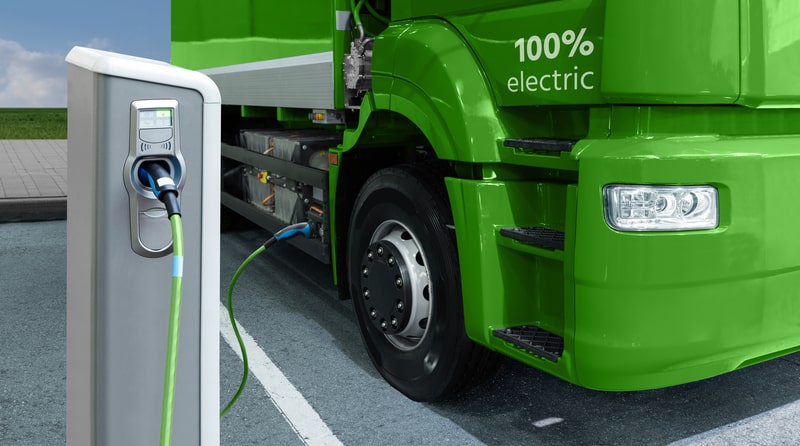
70. Electric vehicles have been used as eco-friendly ice resurfacers. The “Zamboni” ice resurfacer used at the Vancouver 2010 Winter Olympics was electric-powered, reducing emissions and noise during ice maintenance.[70]
71. The Tesla Model S has a “Bioweapon Defense Mode,” an air filtration system capable of removing 99.97% particulate matter, including pollution and allergens, from the cabin air.[71]
72. The Electric Marathon is an annual international race for electric vehicles that covers thousands of kilometers across different countries, promoting electric mobility and showcasing the capabilities of EVs in long-distance journeys.[72]
73. The Aptera, an innovative electric vehicle, utilizes lightweight composite materials and a streamlined design to achieve a remarkable drag coefficient (Cd) of 0.13, making it one of the most aerodynamic production vehicles ever made.[73]
74. The Tesla Model X, an electric SUV, features unique falcon-wing doors that open vertically, allowing for easier access in tight parking spaces and providing a distinctive design element.[74]
75. The Formula E racing series introduced a concept known as “FanBoost,” allowing fans to vote for their favorite driver, who receives a power boost during the race, enhancing overtaking opportunities and adding an interactive element to the sport.[75]
76. The Venturi Buckeye Bullet 3, an electric land speed vehicle, holds the world land speed record for an electric vehicle, reaching a staggering speed of 341.4 mph (549.4 km/h).[76]
77. The NanoFlowcell Quant e-Sportlimousine is a concept electric car that uses a flow battery, which utilizes two different electrolyte solutions to generate electricity, potentially offering higher energy density and longer ranges.[77]
78. The Mahindra e2o, an electric car from India, features “Hill Hold Control” that automatically holds the vehicle on inclines, preventing it from rolling backward when the driver releases the brake pedal.[78]
79. The Tesla Cybertruck, an upcoming electric pickup truck, boasts an ultra-durable exoskeleton made of stainless steel, capable of withstanding impacts and resisting dents and scratches.[79]
80. The Ujet electric scooter is designed with a unique, patented folding system that allows it to be easily folded and unfolded in seconds, enabling convenient storage and portability.[80]
. . . continue reading on the next page
